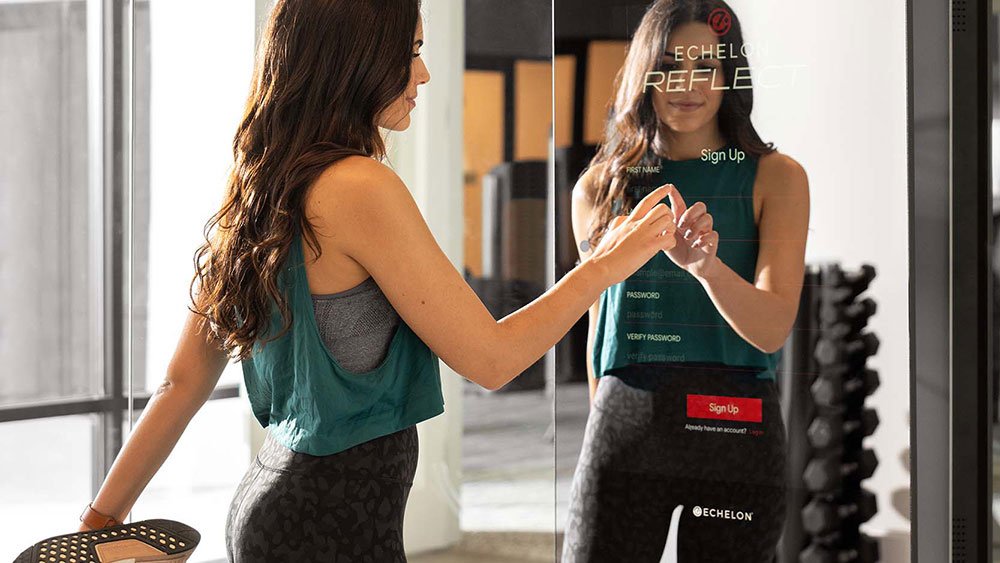7 Things to Consider When Designing a New Gym Interior
Gym design can make or break your fitness center. It is the foundation of your fitness space — affecting your long-term success. However, unless you are a professional, chances are that you have never designed a gym before. Our gym design experts are here to help! Let’s unpack 7 vital considerations for designing a new gym interior.
1: Equipment Styles
What kind of equipment do you need for your gym? Whether you’re designing a new facility or redesigning your gym interior, it is essential to survey the equipment you have versus what you might need. Popular equipment styles include:
Strength Training: Common strength training installments include free weights, benches, and weight equipment (like that of Power Lift).
Functional Training: Specialty training frames are the most popular way to meet the needs of functional training workouts.
Cardio: Treadmills, stationary bikes, and rowing machines are staples of cardio equipment.
Post-Workout Recovery: Upgrade your gym by offering the newest in post-workout recovery like massage chairs, compression boots, massage guns, and rollers.
2: Equipment Accommodations
Now that you know which kind of equipment you need, survey your space to determine which pieces it will accommodate. You want to create a functional flow of space in your gym. For example, you need enough room between cardio equipment for members to comfortably get on and off machines. Around free weight racks, you will need to accommodate benches and open space where members can lift independently.
3: Your Gym Community
It is essential to consider your target audience when designing a new gym. For example, a university gym’s ideal design will look very different from a hotel fitness center. What market are you trying to serve? How can you best accommodate your community’s needs? These guiding questions are essential to the gym design process.
4: The Market in Your Area
When designing a gym, you should consider researching similar facilities in your area. Not only can this process provide inspiration, but it is also essential in ensuring you check all the necessary design boxes. Let’s take a closer look at the two primary reasons your market matters.
Standing out from the crowds
Why should exercisers choose your gym over others in your area? Your design is the foundation of your gym’s value proposition and how you stand out from the crowds.
For example, let’s say you design an advanced gym interior featuring an innovative functional training frame. You are sure this impressive feature will attract new gym goers. Later, you find out another gym in your area has an even bigger functional training frame. As such, this investment loses its edge in your market. By exploring other gyms in your area, you can make informed and carefully calculated design decisions.
Avoiding market gaps
Checking in on your market can ensure you are not missing a core feature found in other local gyms. If your gym has the best equipment and prices but you’re missing an element that members just can’t live without, you will find your gym falling short in exerciser acquisition and retention.
5: Choosing the Most Fitting Fitness Colors
What colors are best for a gym interior? A simple paint job can completely transform the look and feel of your space. You will want to ensure your aesthetics match your brand and present an environment that will support your exercisers. For more insight, you can read our guide to color psychology and how it impacts fitness centers.
6: Professional Insight and Support
Set your new gym or fitness center up for success. Professional gym design services will provide vital end-to-end support for your project. Not only will this ease your workload, but it can also save you money by:
Staying in your budget: It is easy to lose sight of your budget when designing a gym. Experts who have done this time and time again can anticipate challenges, set reasonable expectations, and keep you on track with your spending.
Avoiding mistakes: From outlet placement to building requirements and limitations, gym designs require accommodations that non-specialists might not consider. A mistake in the design process can be costly and challenging to fix later.
Finding the most fitting solutions: Investing in professional support can help you save money by finding cost-effective solutions to any issues in your design process. As such, most successful gym design projects require professional help.
Future-proofing: Fitness technology has been quickly evolving and often has specific power and bandwidth requirements. A gym design expert can help you prepare your gym for long-term success.
7: Choosing Gym Flooring
You might wonder, “What gym flooring is best?” While your exact needs will vary depending on your preferences and market, there are a few central elements to look for in new gym flooring:
Durable: You want to invest in a floor that will look nice for years to come. This will require a gym floor that is durable, scratch-resistant, and made of quality materials.
Free of tripping hazards: Gym flooring is seamless — avoiding any dips, cracks, and textures that could cause a hazard. It is also designed to grip shoes for advanced safety and performance.
Shock absorption: Gym floors face a lot of rough traction. You need a floor that will help absorb the impact of workouts and equipment. This feature can help deter injury and prevent damage.
Choose ASF’s Gym Design Services and Support
The experts at ASF offer end-to-end support on gym projects — from design to execution and ongoing maintenance. We proudly serve the fitness design needs of clients across New York, Pennsylvania, New Jersey, Delaware, Maryland, Washington DC, West Virginia, Virginia, North Carolina, South Carolina, Georgia, Alabama, and Northern Florida. Contact our experts for a free consultation today!









